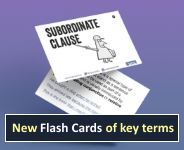Linguistics of lies
In this lesson, students explore the features of lies, from a linguistic perspective.
Goals
- Discuss the features of lies from a linguistic perspective.
- Identify pronouns, negative emotional terms, sense terms and causal phrases.
- Discuss the role of context in interpretation.
- Present evidence to support an argument.
Lesson Plan
Background
»
- Printer-friendly version
- Log in to view or leave comments


